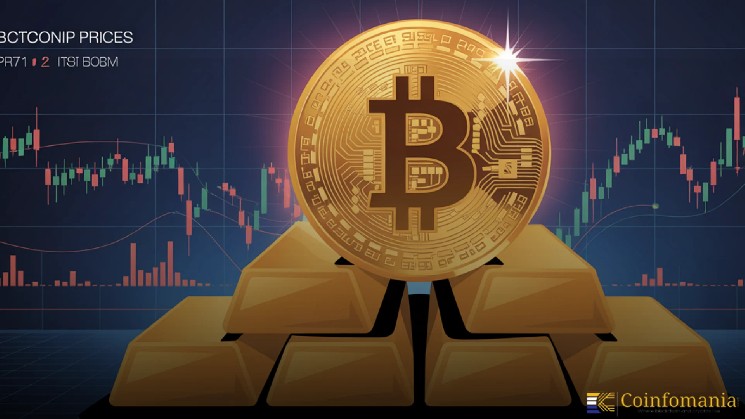Bitcoin has fallen significantly against gold to levels not seen in years. Analysts are calling Bitcoin’s gold holdings an extreme oversell. This ratio shows the amount of gold purchased with 1 Bitcoin and is currently falling. Statistics show that this ratio is significantly lower than the historical average, with a Z-score of approximately -3. Such levels usually imply significant undervaluation.
Bitcoin is abnormally oversold relative to gold! pic.twitter.com/Zb6Vs081X4
— CryptoGoos (@crypto_goos) October 19, 2025
This decline shows that Bitcoin is underperforming compared to gold. This is a good indicator for traders that Bitcoin may be nearing a major turning point soon. Oversold conditions like this usually result in a sharp reversal.
Divergence with gold
Gold continues to run wild amid global uncertainty. Metals have just reached new heights as investors move to safe-haven assets. Demand is rising due to central bank purchases and inflation concerns. Meanwhile, Bitcoin has not been able to catch up. This caused the BTC/Gold ratio to deviate downward. The advent of gold makes Bitcoin look weak, even though its price remains stable. Analysts have observed that in past phases when gold was strong, periods of Bitcoin contraction were followed by massive rallies.
Bitcoin is moving into extreme proportions, which is shown on the technical charts. The relative strength index of this ratio decreased to less than 30. This indicates an oversold market. Historically, such measurements have shown significant lows. Similar arrangements led to the massive Bitcoin boom from 2015 to 2017. Analysts believe that this trend could recur if the market atmosphere changes. Other chart watchers are also hinting at the formation of an ascending triangle in the long run. If Bitcoin leaves this structure, it could regain the electronic gold rush story.
analysis
BTC/Gold was extremely high above 0.60 during the 2021 bull market, but is currently trading around 0.25. This means that the amount of gold needed to buy one Bitcoin is less than half of what it was at the peak of the previous cycle. There are approximately 19.8 million Bitcoin coins in circulation and up to 25,000 tonnes of gold in circulation worldwide. The rarity of the two assets makes this comparison a hot topic. However, gold's consistent performance and trust factor give it an edge when it comes to risk aversion.
Economic and market background
This change is thought to be largely influenced by the global context. Rising interest rates and political uncertainty have strengthened gold's haven status. Investors use it to hedge against inflation and volatility protection. Bitcoin, which is considered a speculative currency, is not popular in this situation. Nevertheless, sentiment may change once monetary policy stabilizes and more people start using digital assets. Bitcoin is still held by institutional investors using exchange-traded products. If risk appetite returns, funds could easily return to the crypto market.
This is called the Bitcoin accumulation zone by many experts. They feel the asset is undervalued compared to the price of gold. If risk sentiment increases or inflation expectations change, Bitcoin could outperform gold again. Nevertheless, analysts caution against assuming the recovery is immediate. The effects of oversold conditions can last for several months. They stress that investors are advised to monitor macroeconomic factors, central bank actions, and regulatory news before declaring a bottom.
long term effects
Bitcoin remains optimistic from a long-term perspective. Each historical ratio is oversold as future highs rise. Bitcoin has the potential to replace traditional stores of value due to its limited supply and increasing institutional usage.
Gold is likely to continue to dominate while uncertainty remains high. Bitcoin's scarcity and its borderless nature may prove to be of some note later when people start to lose faith in the fiat system. Competition between the two assets is currently at its highest level in a decade.


